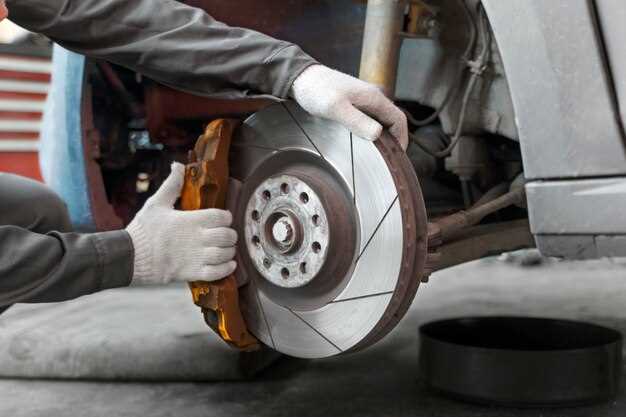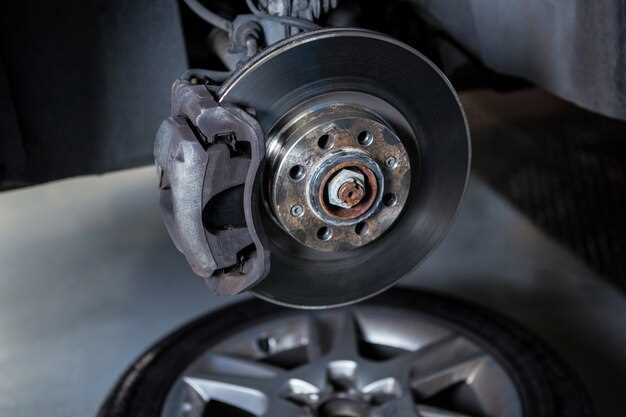
When it comes to optimizing vehicle performance, upgrading your braking system is often overlooked. High-quality brake kits not only increase the safety of your vehicle but also significantly enhance its responsiveness and driving experience. Whether you are a casual driver or an automotive enthusiast, having the right brake components can make a noticeable difference in how your car handles various driving conditions.
In this article, we will explore the top brake kits currently available on the market, focusing on their features, benefits, and suitability for different types of vehicles. From high-performance sports cars to more practical daily drivers, each kit is designed to meet specific needs while ensuring durability and reliability. Investing in a top-notch brake kit can lead to improved stopping power, reduced brake fade, and longer-lasting components, ultimately enhancing your vehicle’s overall performance.
Join us as we dive into the essential factors to consider when selecting a brake kit and highlight the leading options that deliver exceptional results. Whether you’re looking to upgrade your brakes for racing, off-roading, or everyday use, this guide will help you make an informed decision and elevate your driving experience.
Choosing the Right Brake Kit for Your Vehicle Type

Selecting the appropriate brake kit is crucial for maximizing your vehicle’s performance and ensuring safety. Different vehicle types have distinct requirements, and understanding these can help guide your choice.
Passenger Cars: For everyday driving, a performance-oriented brake kit with quality rotors and semi-metallic pads is recommended. This combination offers a balance of stopping power and noise reduction. Look for kits that feature slotted or drilled rotors to improve heat dissipation and reduce brake fade.
Sport and Performance Cars: Vehicles designed for high speed and agility require high-performance brake kits. Consider options with multi-piston calipers and carbon-ceramic rotors for optimal stopping power and reduced weight. Upgraded pads with high friction coefficients can also enhance braking response and thermal stability.
SUVs and Trucks: Heavier vehicles demand brake kits that can handle increased stress. A heavy-duty brake kit with larger rotors and robust calipers is necessary to provide reliable stopping capabilities. Look for kits that utilize premium ceramic pads to minimize dust and extend rotor life, as well as those rated for specific towing capacities if applicable.
Off-Road Vehicles: For off-road applications, durability and resistance to harsh conditions are key. Invest in a brake kit designed with reinforced rotors and pads optimized for gravel and mud driving. Kits should also feature protective coatings to prevent rust and corrosion in extreme environments.
Lastly, always ensure compatibility with your vehicle’s make and model. Checking manufacturer specifications and consulting with professionals can help you avoid potential installation issues and achieve the best performance from your selected brake kit.
Installation Guide: Tips for a Successful Brake Kit Upgrade
Upgrading your vehicle’s brake kit is a significant improvement that enhances performance, safety, and overall driving experience. To ensure a smooth upgrade process, follow these essential tips.
1. Gather Necessary Tools and Materials
Before starting the installation, make sure you have all the required tools. Essentials typically include a jack, jack stands, lug wrench, brake fluid, and specific tools for removing calipers and rotors. Check the manufacturer’s instructions for any special tools you might need.
2. Review the Manual
Consult your vehicle’s manual for specific brake system guidelines. Understanding your car’s brake assembly will help identify any unique components or procedures required for your model.
3. Ensure Safety First
Always prioritize safety. Park your vehicle on a flat surface, engage the parking brake, and use wheel chocks. Wear protective gear, including gloves and goggles, to protect yourself from debris and brake fluid.
4. Remove Old Brake Components
Start by loosening the wheel lug nuts before lifting the vehicle. Once elevated, remove the wheels to access the brake components. Carefully detach the calipers and old rotors, making sure to keep track of any small parts or hardware that may need to be reused.
5. Prepare New Components
Before installation, inspect new components for any defects. Clean the rotors thoroughly to eliminate any protective oil coating. If your kit includes new brake pads, prepare them by applying brake grease to the back to reduce noise and ensure smooth operation.
6. Install New Brake Kit
Begin installing the new rotors, ensuring they are seated correctly. Attach the calipers and secure them according to the manufacturer’s specifications. Double-check that all bolts and fittings are properly tightened to avoid any issues after installation.
7. Bleed the Brakes
After installation, it’s essential to bleed the brake system to remove any air trapped in the lines. Follow a recommended bleeding procedure using either the two-person method or a brake bleeder tool. This step ensures optimal brake responsiveness.
8. Test Drive Carefully
Once everything is assembled, take your vehicle for a cautious test drive. Gently test the brakes in a safe area first to assess any unusual noises or behaviors. Gradually increase your speed and test different braking pressures to gauge performance.
9. Monitor Performance
After the installation, keep an eye on the brake performance over the next few weeks. Look out for any signs of irregular wear, noise, or vibrations. Early detection of potential issues can prevent larger problems down the line.
By following these guidelines, you can achieve a successful brake kit upgrade, enhancing both your vehicle’s performance and your peace of mind on the road.
Understanding Brake Components: What to Look for in Quality Kits

When selecting a brake kit, understanding the individual components is crucial for enhancing vehicle performance and safety. Quality kits typically include brake pads, rotors, calipers, and hardware. Each component plays a vital role in the braking system’s overall functionality.
Brake pads are essential for friction generation when stopping. Look for pads made of high-quality materials such as ceramic or semi-metallic compounds, as they offer a balance between performance and noise reduction. Pay attention to the heat resistance and the coefficient of friction, as these factors affect braking efficiency under various conditions.
Rotors, or brake discs, are another critical component. Opt for slotted or drilled rotors as they enhance ventilation and improve heat dissipation. A good rotor should maintain its shape under extreme conditions and resist warping. Inspect the rotor’s thickness and surface finish, as these attributes contribute to effective braking and longevity.
Calipers are responsible for applying pressure to the brake pads against the rotors. High-performance calipers typically feature a lighter construction but offer greater strength and better heat dissipation. When evaluating calipers, consider the number of pistons; more pistons can result in improved clamping force and better modulation.
Lastly, ensure that any hardware included in the kit is of high quality. This includes brackets, bolts, and shims. Proper hardware will ensure the components fit together securely and help maintain consistent performance over time.
When assessing brake kits, also consider brand reputation, warranty, and user reviews. A reputable manufacturer that offers a warranty usually stands behind the quality of their products. Investing in a well-rounded brake kit will significantly enhance your vehicle’s performance and safety.

